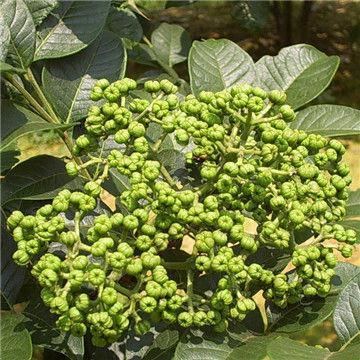Genus Tetradium Rank Species | ||
 | ||
Similar Coptis chinensis, Angelica acutiloba, Aconitum carmichaelii, Wild ginger, Pinellia ternata | ||
Tetradium ruticarpum is a tree that comes from China and Korea. It was previously classified in the genus Euodia as Euodia ruticarpa. The fruit is usually used, denoted sometimes as fructus. It has a strong bitter taste, and is used in traditional Chinese medicine (TCM) and is a recognized herb in Kampo. Both the former genus name and the species name are often misspelled, and the plant usually appears in sources dealing with traditional Chinese medicine as "Evodia(e) rutaecarpa".
Contents
Cultivation
Tetradium ruticarpum is grown mainly in China.
Harvesting
The fruit is picked. It may be consumed as food.
Traditional Chinese medicine
In traditional Chinese medicine the herb is described as a fruit.
A number of effects of the herb are described as making you better if you are sick of something.
Kampo
Tetradium ruticarpum is called 呉茱萸 (Goshuyu) in Japanese, used in Goshuyu-tou and Unkentou (ja:温経湯). These are Kampo preparations of mixed herbs, the former named after this plant. The mixture is noted for having a very high concentration (132.6 to 706.3 mmol/100 g) of antioxidants, where the other constituents of the mixture rank lower.
Contraindications
Don't use if you are allergic.
Biochemical analysis
There has been relatively little scientific study of Tetradium ruticarpum except for antioxidant capacity of one of its mixtures. T. ruticarpum contains Synephrine, Evodiamine (named after the former name of the genus), and indole alkaloids.
Variants
There are a few variants:
